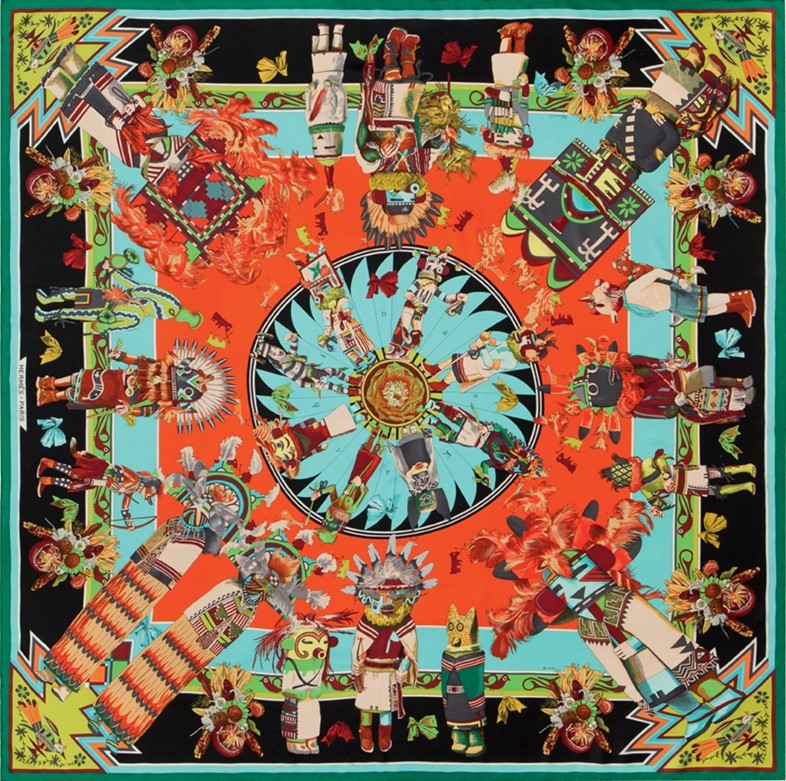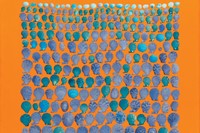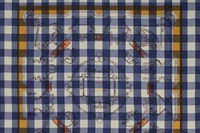Celebrating Hermès’ iconic silk scarves, AnOther speaks to Bali Barret, Deputy Artistic Director for womenswear about the design process and collaborating with illustrators...
In 1956, new Princess of Monaco Grace Kelly stepped out in public wearing an Hermès scarf as a sling. In the same decade, Queen Elizabeth was pictured on a postage stamp wearing her scarf more traditionally around her neck. In 1992 Madonna flagged the nineties trend by wearing one as a halter-top while Sharon Stone used hers to tie up Michael Douglas in Basic Instinct. And in 2011, Bali Barret, Deputy Artistic Director for Hermès’ womenswear, wears her scarf as a cape.
“It is always changing. Right now I love to wear it as a cape. I also wear it on my head a lot,” Barret explains. “Each year we invent new ways to wear the scarf. To me, Hermès is this kind of mess – mixing, daring, layering. A sophisticated mess.” Barret joined Hermes in 2003, and has spent the past eight years transforming and expanding the nature of the silk square by encouraging more contemporary designs and a younger appeal: “It was very classic, almost boring, old lady-like,” she recalls, “In a few years it became something very young, cool and easy.”
Whether you chose to wear it around your neck, head, waist or wrist, the iconic Hermès scarf has become synonymous with the brand. Born in 1937, each hand-printed scarf is woven from the silk of 250 mulberry moth cocoons. A bustling square where horses, leopards and figurines run free amidst the lines and swirls of clashing themes and colours, reigned in by the meticulous precision and care of Barret and her team. Here, AnOther talks to Barret about the design process and inspiration behind the scarf.
How long does it take to create each Hermès scarf?
It takes a long period of time – more than two years per scarf and around fifty people working on the same object to make it beautiful. That is the magic of the scarf. As a fashion designer I am very impatient – being at Hermès has taught me to take time and I have discovered the positive art of working slowly. I think that is the strength of the scarf – the fact that people treat it with respect, love and affection.
"It takes more than two years per scarf and around fifty people working on the same object to make it beautiful"
How do you decide which illustrators to work with?
A mix of different things – I don’t want something too balanced or sensible. The personality of the designer must come through. Knowing them well, knowing their skills, guiding them towards what I like. We work with people for a long period of time – illustrators and designers working for the brand have worked with us for 30-40 years. We have classical, elegant artists and we also have street artists, so it varies. We are very faithful to the people we work with; it is like a relationship and we will keep on having this relationship as long as they want to design.
Why do you enjoy designing Hermès scarves?
With a scarf you can do something that you cannot do with a bag or a sweater - the limits are more open. You can mix, you can do almost anything. You are very free.
What words summarise the Hermès scarf this season?
Scale. Taking a design and enlarging it and making it stronger. Scale and also colour - colours that shock. Eccentricity. Also the fact that you can wear it different ways – wrap the fabric around you.
Hermes will be celebrating its new silk campaign Paris Mon Ami at Harrod's until January 3 2012.
Mhairi Graham is the AnOther Fashion Co-ordinator.



